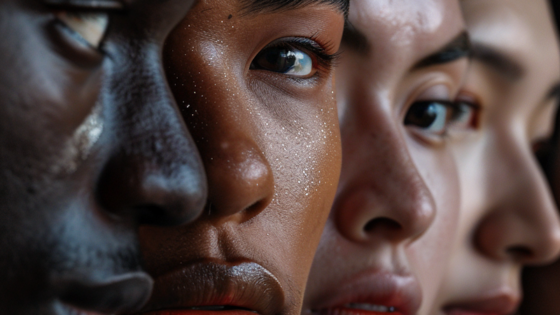on
BY TRISHA SMITH
I will never forget that day.
It was December in the year 2000 and I had just moved to the Bronx, NY. My mom and I went to about five different schools before I was finally accepted to Adelaide Stevenson High School on Lafayette Ave.
I was about two months into my attendance and had only made friends in passing so far. There was this one guy though, his name was Taz. He had just come up from Jamaica, and although he had his share of mean streaks towards me, I thought he was cute and had a little crush on him. I was in the gym playing volleyball with my class last period one day, and Taz walked up to the door and said something really rude. I was used to his aggressive approach with me, but that day I conjured the strength to talk back and told him to “shut the f**k up!”
My heart was beating a mile a minute when I saw him walk through that gym door and begin coming straight towards me, I didn’t know what to expect so I just stood there. All I remember was seeing his hand raise and the next minute I felt a horrible sting at the side of my cheek. That guy slapped me so hard, my eyes watered and my body froze with humiliation and anger. I wanted to fight but knew I would lose. The teacher didn’t say anything, some of the students chuckled under their breath and the majority of them said nothing. I felt so defeated, so helpless…like did this man really just hit me? Did I just stand there and take it? Nothing could have prepared me for that moment I thought could never happen to me. Not in a million years!
Little did I know, giving Taz this “pass” at 16 years old, was the beginning of a long road of domestic violence into my adulthood.
I wish I had some guidance back then. Maybe a healthier relationship with my mother would have helped me avoid keeping the situation to myself at that time. Maybe, if I had friends, I could fight back, or they could have jumped him. Or maybe if I didn’t let him be so mean to me to begin with, he wouldn’t even think of putting his hands on me the way he did. So many questions raced in my head as I was helplessly taunted by this man every day until my last exam in June of 2001.
I shared this story to shed light on teen violence, especially in the dating scene. With a heart that has not yet been broken, coupled with a fresh taste of intimacy, teens are inclined to fall in love and be of service to those which they have revolved their worlds around. Unfortunately, the love in the air can quickly turn sour as navigating relationships as a teen isn’t as easy as it seems. Did you know that dating violence affects one in three teens on average? This can take place in person, or online. This is because many actions and behavior amongst teen couples have been normalized.
My first encounter of teen violence wasn’t even with my boyfriend, but it goes to show that nobody is an exception.
I want to share with you some tips that I wish someone had given me when I was a teen who had experienced this abuse.
- The foundation of any relationship should begin with respect. Yelling, name calling, and guilt-tripping is not respected. If your partner doesn’t respect you enough to speak to you in a calm manner without putting you down, or name calling, you need to walk away from the relationship.
- Abuse is not just physical; your partner can mentally and verbally abuse you as well. The minute you feel like you are “less than,” or feel like you are unable to make a decision without their approval, you need to walk away.
- I do believe that people can change, but if you are being physically abused you need to walk away. Give that person time to seek help away from you as you heal and experience life outside of fear and pain. I would not suggest rekindling a relationship with a partner that was abusive in the past.
- Don’t be afraid to cut ties. If you started a relationship online and it’s not going the way you had hoped, don’t be afraid to block, delete, or just disable the app entirely! Always remember to trust your gut. You come first and the minute you sense that something is off, or the person is still treating you in a way that you expressed you didn’t like, walk away.
- Never be afraid to tell someone, whether that be: a parent, a teacher, or the police. That whole “rat” label is overrated. You have a right to protect yourself and seek help against anything that threatens your well-being. It’s not “too much,” it’s common sense.
- Believe the warning signs and take heed to the red flags when you see them. If you have had the opportunity to observe this man’s behavior before getting together, never think for one second that he will now change because he is with you. You cannot change anyone but yourself! Walk away.
- Love yourself more. I would not have been in any violent situation if I loved myself enough to: create boundaries, demand respect, and have some sort of standard to how I felt I deserved to be treated. We should always take the time to nurture our minds and bodies with healthy foods, team activities, affirmations, support groups and healthy friends that make us feel good about ourselves. These things will be the backbone to your decision making.
I know dating as a teen has its rollercoaster moments, especially when intimacy is involved and you go to the same school, it can be hard to let go. I am not saying that you should walk away the moment things get tough. I am saying to walk away if you feel like your concerns are not being heard. If you find yourself doing things you don’t want to do and above all, if you are being abused in any way: emotionally, mentally, or physically.
This is no joke! The abuse you are experiencing has a lot to do with your self- worth and your partner’s inability to control themselves. Both parties need healing.
Implement more self-love activities in your life and fortify your heart with discernment. Set standards for yourself and never allow anyone to violate your: mind, heart, or body.
Stay in the loop with exclusive news, stories, and insights—delivered straight to your inbox. No fluff, just real content that matters. Sign up today!












